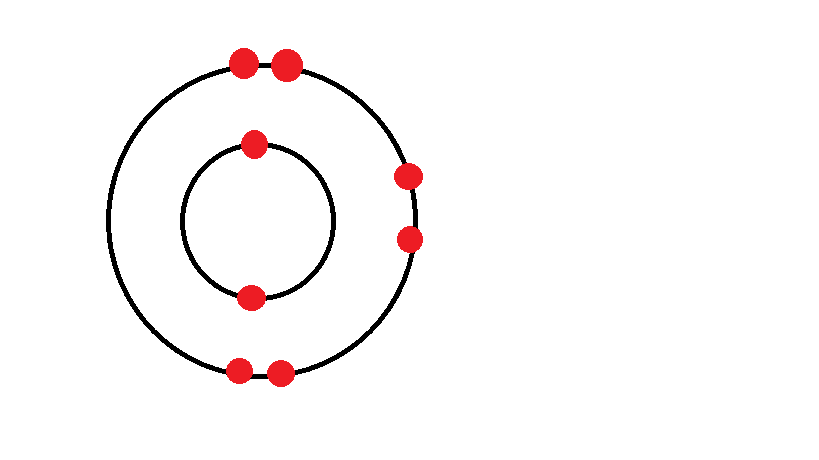Basic Chemistry Exam - Summer School

This is the information that we have covered during the first week of summer school.
- 1.
Which of the following is an example of a physical change?
- A.
Ice forming after water is placed in a freezer.
- B.
A certain liquid is added to a solid, and bubbles of gas form.
- C.
Adding baking sode to vinegar.
- D.
A bicycle rusting in the rain.
Correct Answer
A. Ice forming after water is placed in a freezer.Explanation
Ice forming after water is placed in a freezer is an example of a physical change because the water molecules rearrange themselves and slow down their movement to form a solid structure. The substance itself remains the same, only changing its state from a liquid to a solid. No new substances are formed, and the chemical composition of water remains unchanged.Rate this question:
-
- 2.
What element is represented in the picture?
- A.
Carbon
- B.
Boron
- C.
Oxygen
- D.
Helium
Correct Answer
C. OxygenExplanation
The correct answer is Oxygen. Oxygen is represented in the picture.Rate this question:
-
- 3.
When the scientist Mendeleev made his arrengement of the periodic table, he found that elements with _______________________ fell into the same group on the table.
- A.
The same mass
- B.
Similar size
- C.
The same color
- D.
Similar properties
Correct Answer
D. Similar propertiesExplanation
When Mendeleev arranged the periodic table, he observed that elements with similar properties fell into the same group. This means that they exhibited similar chemical behaviors, reactions, and characteristics. The arrangement of elements based on their similar properties allowed for the identification of trends and patterns in the periodic table, which facilitated the prediction of the properties of undiscovered elements.Rate this question:
-
- 4.
When you mix sodium hydroxide and bromothymol blue, it becomes warm. This is an example of a _________________ reaction.
- A.
Exothermic
- B.
Inhibitor
- C.
Inhibitor
- D.
Endothermic
Correct Answer
A. ExothermicExplanation
Think to yourself - is there any information in the problem that you don't need? Don't let big words confuse you - you may not need them!Rate this question:
-
- 5.
Which of the following changes is a chemical change?
- A.
Water is boiled.
- B.
Wood is burned.
- C.
Aluminum foil is crumpled.
- D.
Glass is shattered.
Correct Answer
B. Wood is burned.Explanation
Wood is burned is the correct answer because burning wood involves a chemical reaction known as combustion. During combustion, the wood undergoes a chemical change, breaking down into different substances such as carbon dioxide, water vapor, and ash. This is different from the other options which involve physical changes, such as boiling water, crumpling aluminum foil, or shattering glass, where the substances involved do not change their chemical composition.Rate this question:
-
- 6.
The mass number of an atom is equal to the number of protons and neutrons. According to this definition, which element in the table above has the highest mass number?
- A.
Hydrogen
- B.
Carbon
- C.
Boron
- D.
Oxygen
Correct Answer
D. OxygenExplanation
The mass number of an atom is determined by the sum of its protons and neutrons. Oxygen has the highest mass number among the given elements because it has 8 protons and 8 neutrons, resulting in a mass number of 16. Hydrogen has a mass number of 1, carbon has a mass number of 12, and boron has a mass number of 11. Therefore, oxygen has the highest mass number.Rate this question:
-
- 7.
This is the fomula for vinegar.CH3CO2HWhat are all of the elements found in the formula for vinegar?
- A.
Hydrogen and Oxygen
- B.
Carbon, Hydrogen, and Oxygen
- C.
Carbon and Oxygen
- D.
Chrome, Cobalt, and Hydrogen
Correct Answer
B. Carbon, Hydrogen, and OxygenExplanation
The formula for vinegar, CH3CO2H, indicates the presence of carbon, hydrogen, and oxygen. The "C" represents carbon, the "H" represents hydrogen, and the "O" represents oxygen.Rate this question:
-
- 8.
Why should we practice safety in the laboratory? Give three examples of how to be safe in the lab.
Quiz Review Timeline +
Our quizzes are rigorously reviewed, monitored and continuously updated by our expert board to maintain accuracy, relevance, and timeliness.
-
Current Version
-
Jan 19, 2023Quiz Edited by
ProProfs Editorial Team -
Jun 17, 2010Quiz Created by
Mbernander



